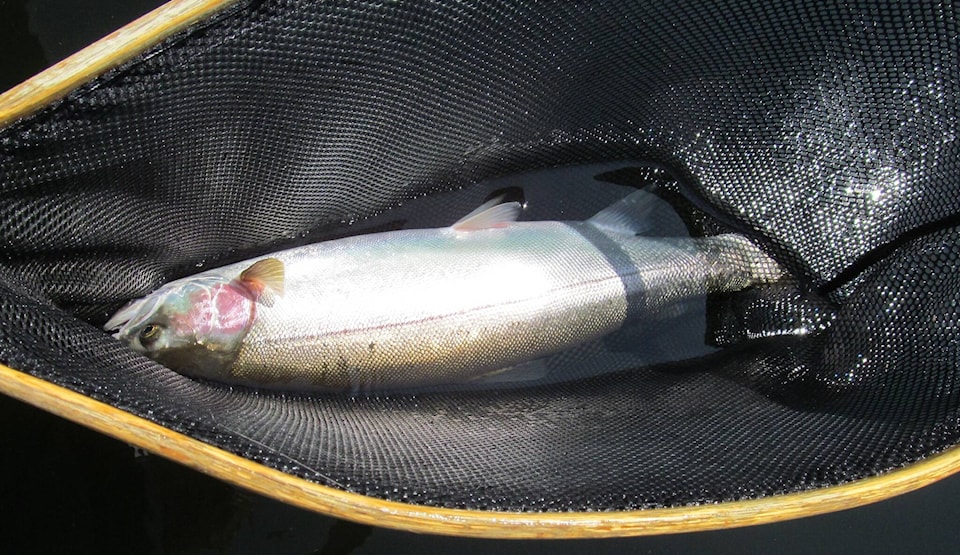When I was a youngster, sometime last century, catch and release was an unknown practice.
I mostly fished streams back then, and if an incidental catch of a coarse fish occurred, it was not released back into the water, but thrown as far up the bank as I could. If a small trout was caught, it too was not handled in the best manner.
Its belly was squeezed to get a good grip, the barbed hook (often trebled) wrested from its mouth, and it was unceremoniously thrown back in the water. Looking back now, I can only imagine how many trout were killed by this rough handling. It wasn’t a source of concern to me then, but it most certainly is these days.
Catch and release is now a matter of course, and I try to do it in a manner that causes the least amount of harm to the fish.
As I grew older, I began to realize just how precious our natural resources are, and fish are no exception. There are a number of reasons why a person may want to release a fish; it may be too small or the wrong species. It may be too large, for instance here in Region 5, anglers can only keep one trout over 50 cm. If the five fish limit is what is being sought, and one fish over 50 cm has already been killed, no more of that size may be taken and must be released to satisfy the daily possession limit. Also, any foul-hooked fish must be released.
READ MORE: South Cariboo fly fisher shares his journey in new book
I have learned, and put into practice, the best methods to safely release a fish.
1. Never touch or damage its gills; if a hook is lodged there, cut off the hook from the line before releasing the fish. If it is bleeding profusely, it would be best to kill it and make it part of the limit.
2. Keep the fish in the water, especially after a long battle; it needs oxygen as much as we do to survive. For this, it uses its gills. If it must be removed from the water, always wet the hands or use wet rubber gloves to protect the slime layer on the fish. This layer is its defense against fungus and disease.
3. If the fish is to be released, never land a fish on the shore, as sand and rocks can cause irreparable damage. Always use a net, keep the fish in the water and remove the hook carefully.
4. If releasing fish is a goal, use barbless hooks or pinch the barb down. It has been my experience that using barbless hooks doesn’t necessarily mean more fish will get away before landing them.
5. Do not squeeze the fish; doing so can damage internal organs. If a photograph is wanted, have the camera ready before lifting the fish out of the net with wet hands, cradling its belly with one hand while holding onto the caudal area in front of the tail with the other. Do not keep the fish out of the water more than five seconds.
6. If the fish is still active in the net it can be calmed by holding it upside down before removing the hook.
7. There are numerous tools on the market such as forceps or long-nosed pliers that can aid in hook removal while minimizing damage to the fish’s mouth.
8. Do not prolong the fight, using a heavier pound-breaking strength leader can aid in getting the fish in quicker, minimizing the amount of lactic acid buildup in its muscles. A person who works out too hard will get sore muscles due to lactic acid buildup. Fish are the same, and if too much lactic acid is built up in a fish it may not recover.
9. While nets are a key component to landing fish, the type of mesh on a net is critical. The best mesh on a net is rubber, as it will not impact the slime layer on a fish as much as a cloth or nylon mesh will.
10. After taking a photo, put the fish back in the water and revive it by holding it right side up under the water by its tail until it starts to struggle, then let it go. Keep an eye out for predators like loons, eagles, or ospreys before releasing it. A fish floating on the surface is easy prey.
By practising these catch and release techniques the fisheries resource will remain strong and viable, allowing a trophy fish to be caught over and over during its lifetime to the thrill of the next angler.
